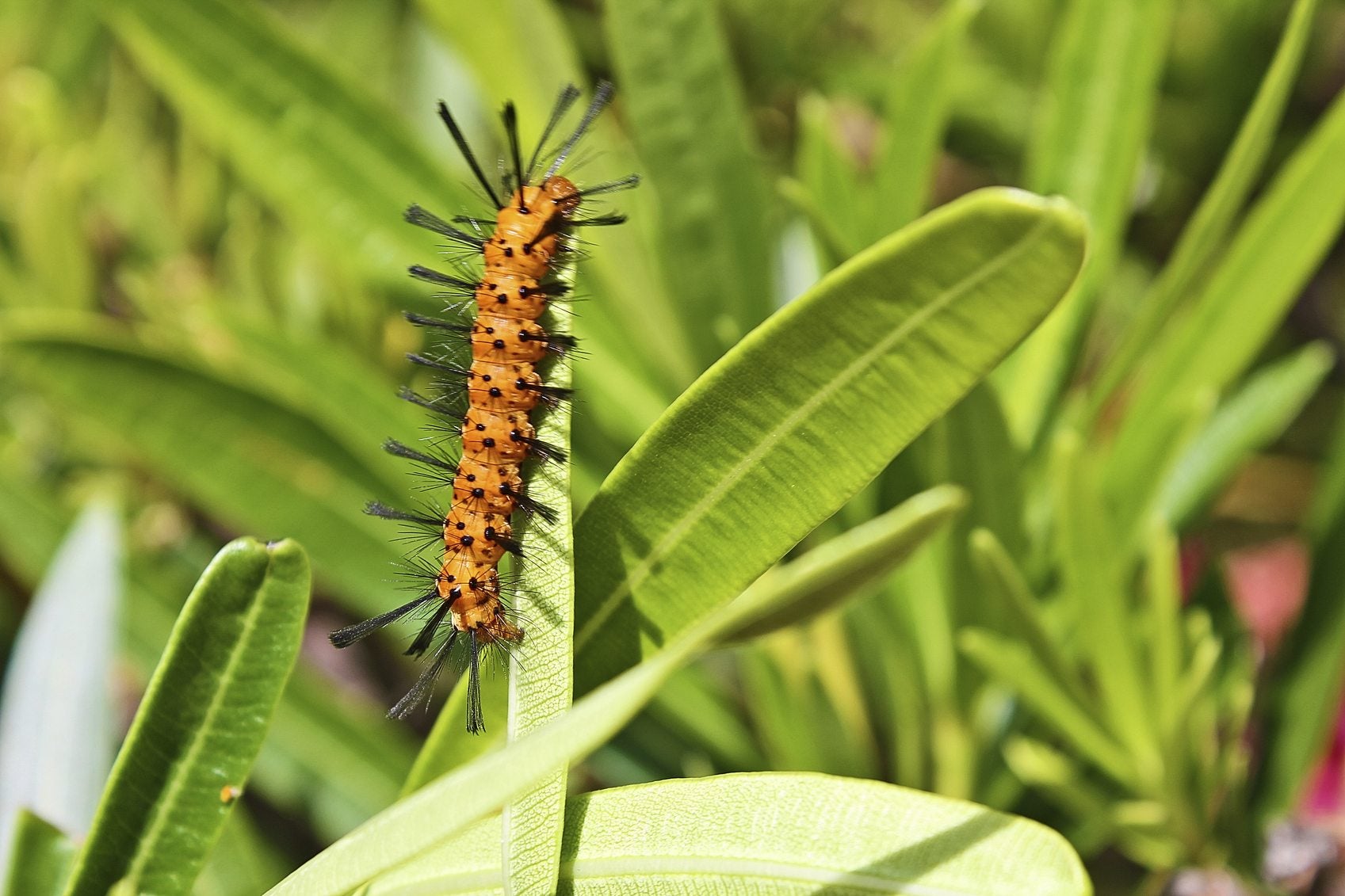Oleander Plant Caterpillars: Learn About Oleander Caterpillar Damage


A native of the Caribbean region, oleander plant caterpillars are an enemy of oleanders in the coastal areas of Florida and other southeastern states. Oleander caterpillar damage is easy to recognize, as these oleander pests eat the tender leaf tissue, leaving the veins intact. While oleander caterpillar damage rarely kills the host plant, it defoliates the oleander and gives the leaves a skeleton-like appearance if not controlled. The damage is largely aesthetic. Read on to learn how to get rid of oleander caterpillars.
Oleander Caterpillar Life Cycle
In the adult stage, oleander plant caterpillars are impossible to miss, with iridescent, bluish green body and wings with bright reddish orange at the tip of the abdomen. The wings, body, antennae, and legs are marked with small, white dots. The adult oleander wasp moth is also known as the polka-dot wasp because of its marking and wasp-like shape. The female oleander caterpillar moth lives only about five days, which is plenty of time to lay clusters of creamy white or yellow eggs on the undersides of tender leaves. As soon as the eggs hatch, the bright orange and black caterpillars begin feeding on the oleander leaves. Once full grown, the caterpillars wrap themselves in silky cocoons. The pupae is often seen nestled into tree bark or under the eaves of buildings. The entire oleander caterpillar life cycle spans a couple of months; one year is ample time for three generations of oleander plant caterpillars.
How to Get Rid of Oleander Caterpillars
Oleander caterpillar control should begin as soon as you see the caterpillars on the leaves. Pick the caterpillars off by hand and drop them in a bucket of soapy water. If the infestation is severe, clip heavily infested leaves and drop them into a plastic garbage bag. Dispose of the infested plant matter carefully to prevent spread of the insects. If all else fails, spray the oleander bush with Bt spray (Bacillus thuringiensis), a natural bacteria that poses no risk to beneficial insects. Chemicals should always be a last resort, as pesticides kill beneficial insects along with the oleander plant caterpillars, creating even larger infestations with no natural enemies to keep the pests in check.
Are Oleander Caterpillars Poisonous to Humans?
Touching oleander caterpillars can result in an itchy, painful skin rash and touching the eyes after contact with the caterpillar can cause inflammation and sensitivity. Wear gloves when working with an infested oleander plant. Wash your hands immediately if your skin comes in contact with the caterpillars. Note: Keep in mind that all parts of oleander plants are also highly toxic.
Sign up for the Gardening Know How newsletter today and receive a free copy of our e-book "How to Grow Delicious Tomatoes".

A Credentialed Garden Writer, Mary H. Dyer was with Gardening Know How in the very beginning, publishing articles as early as 2007.